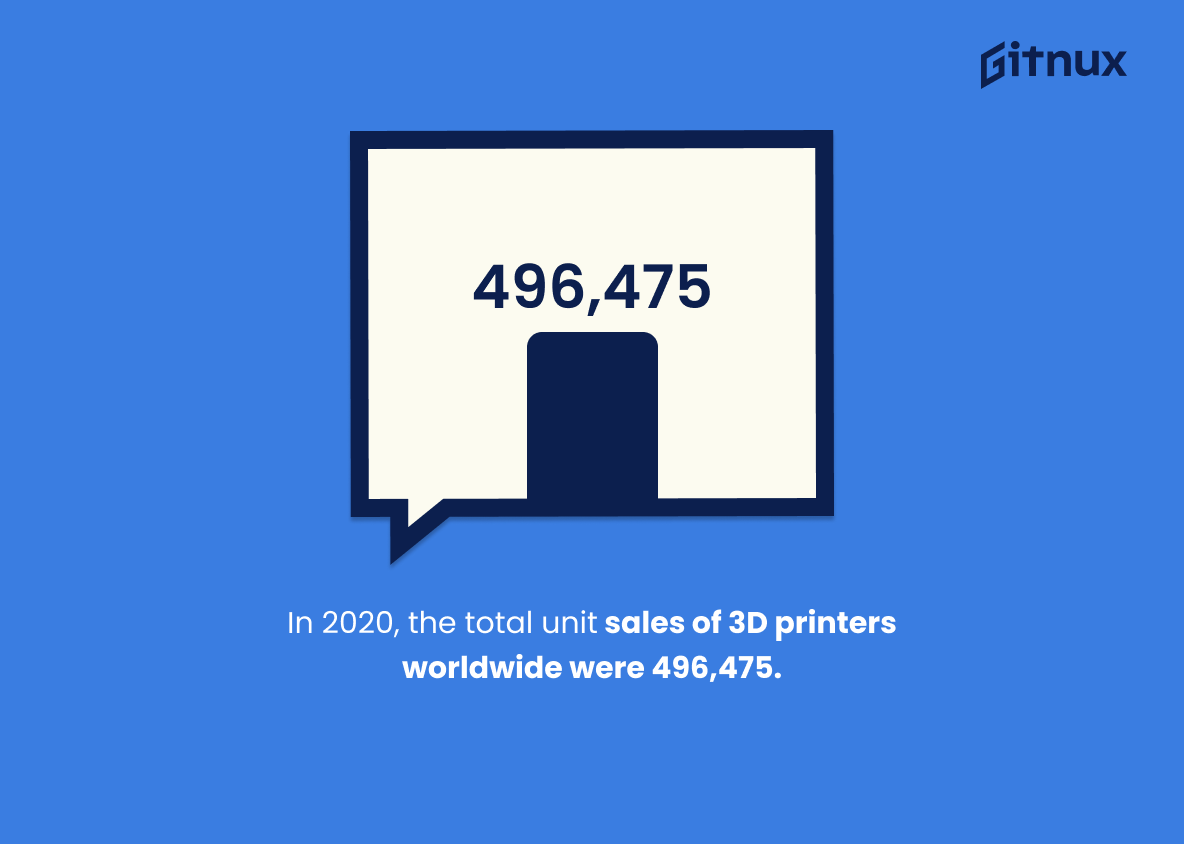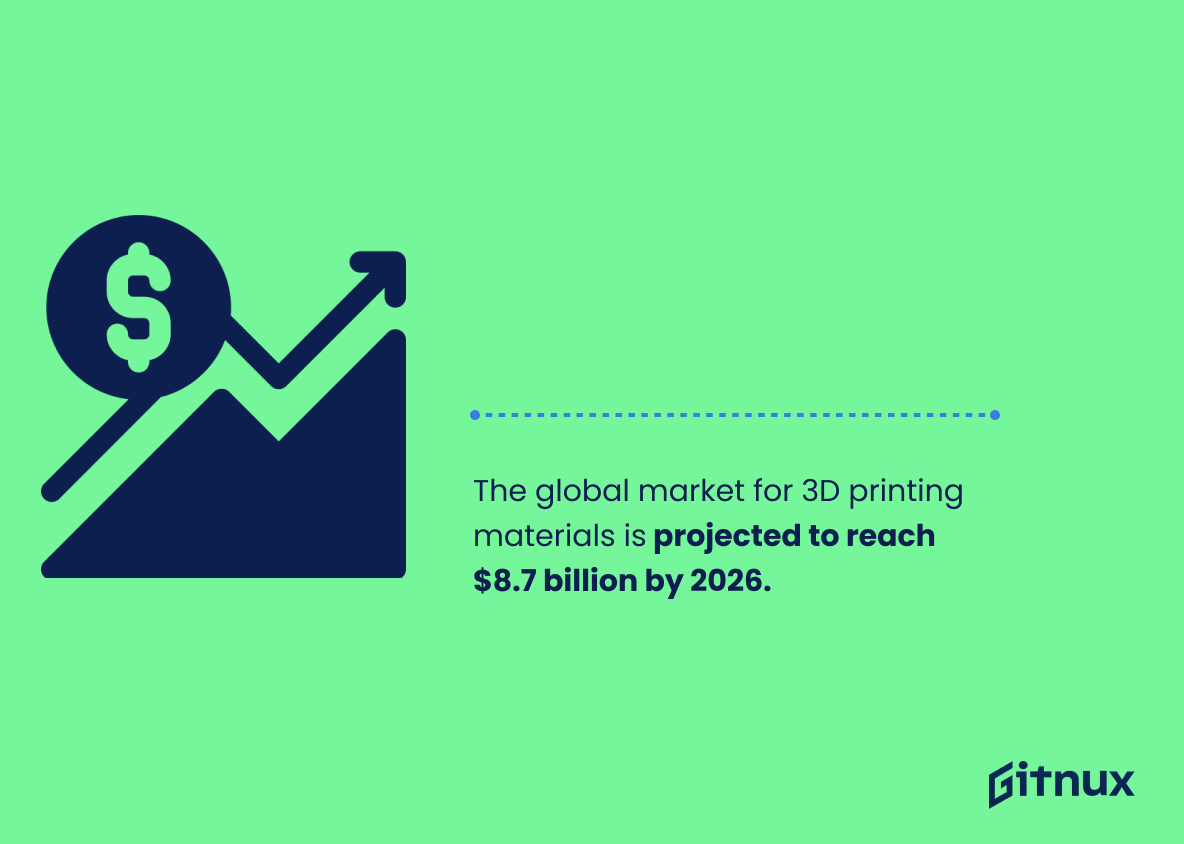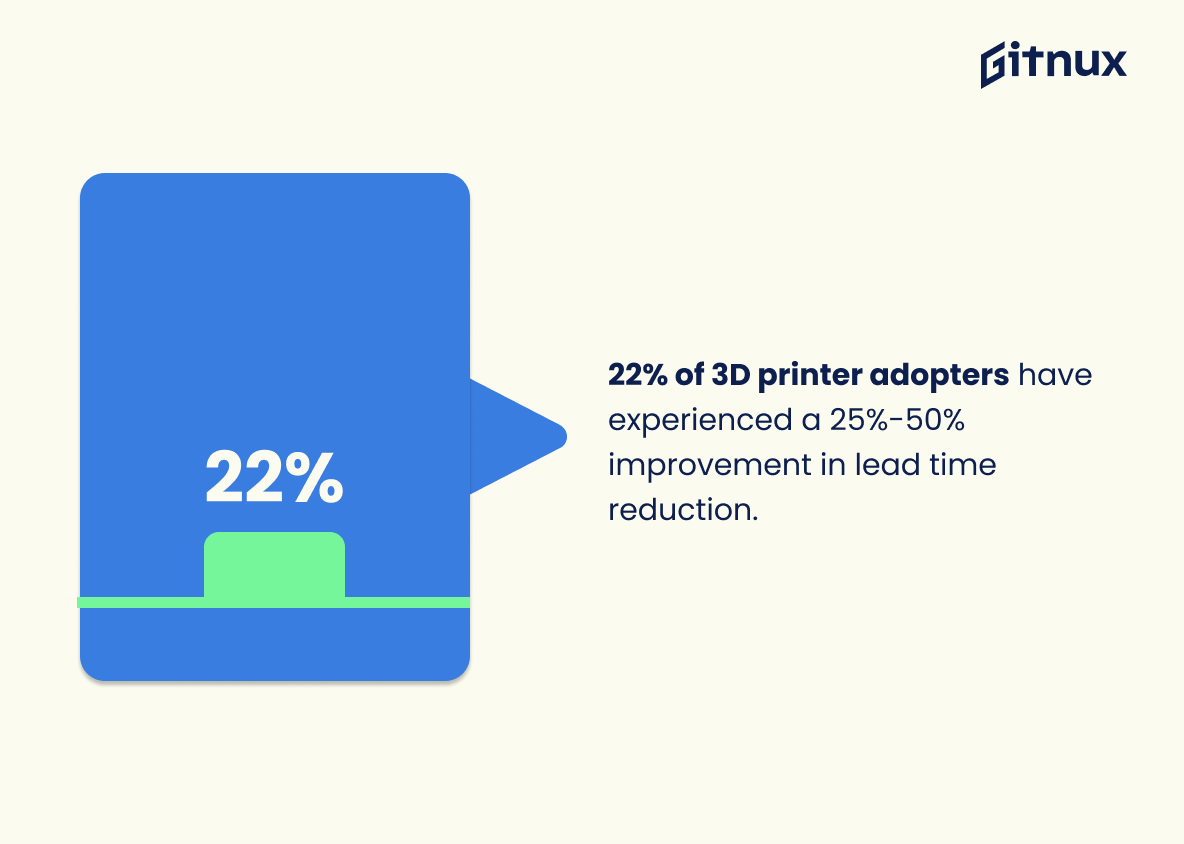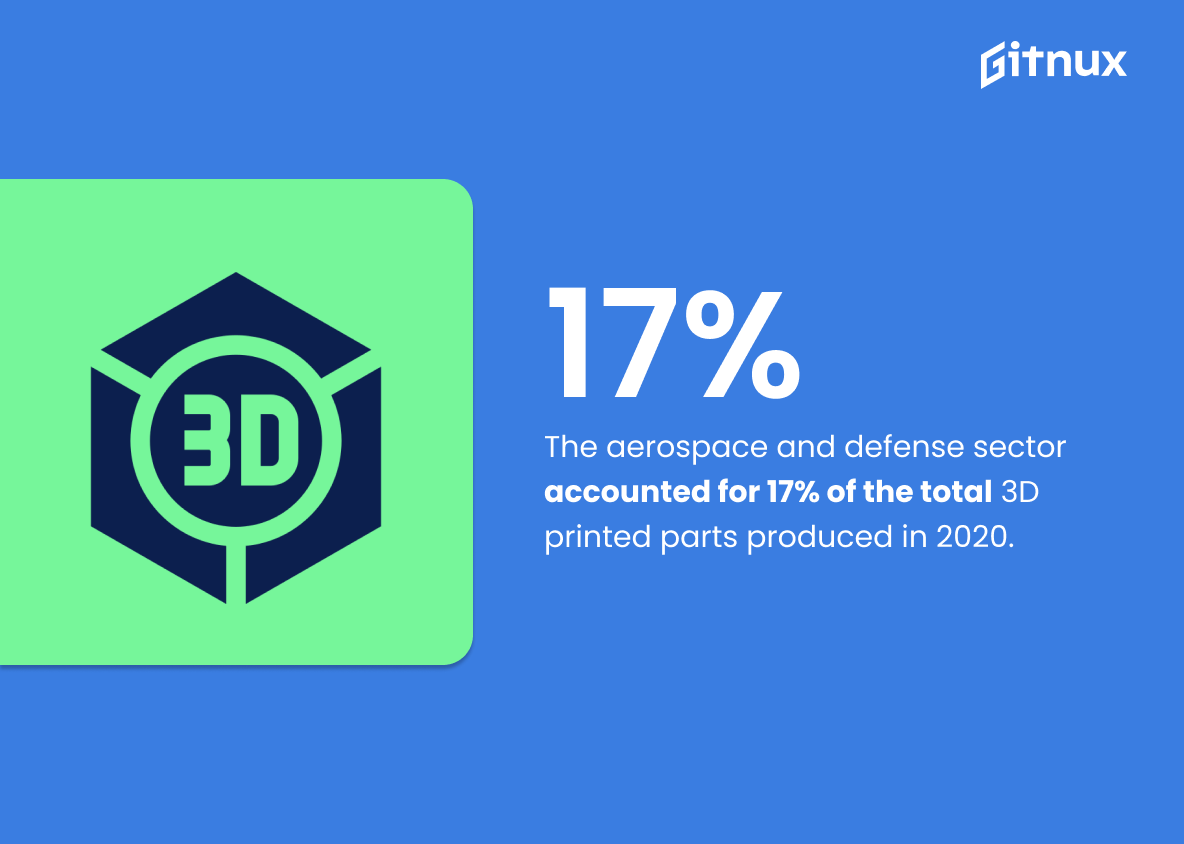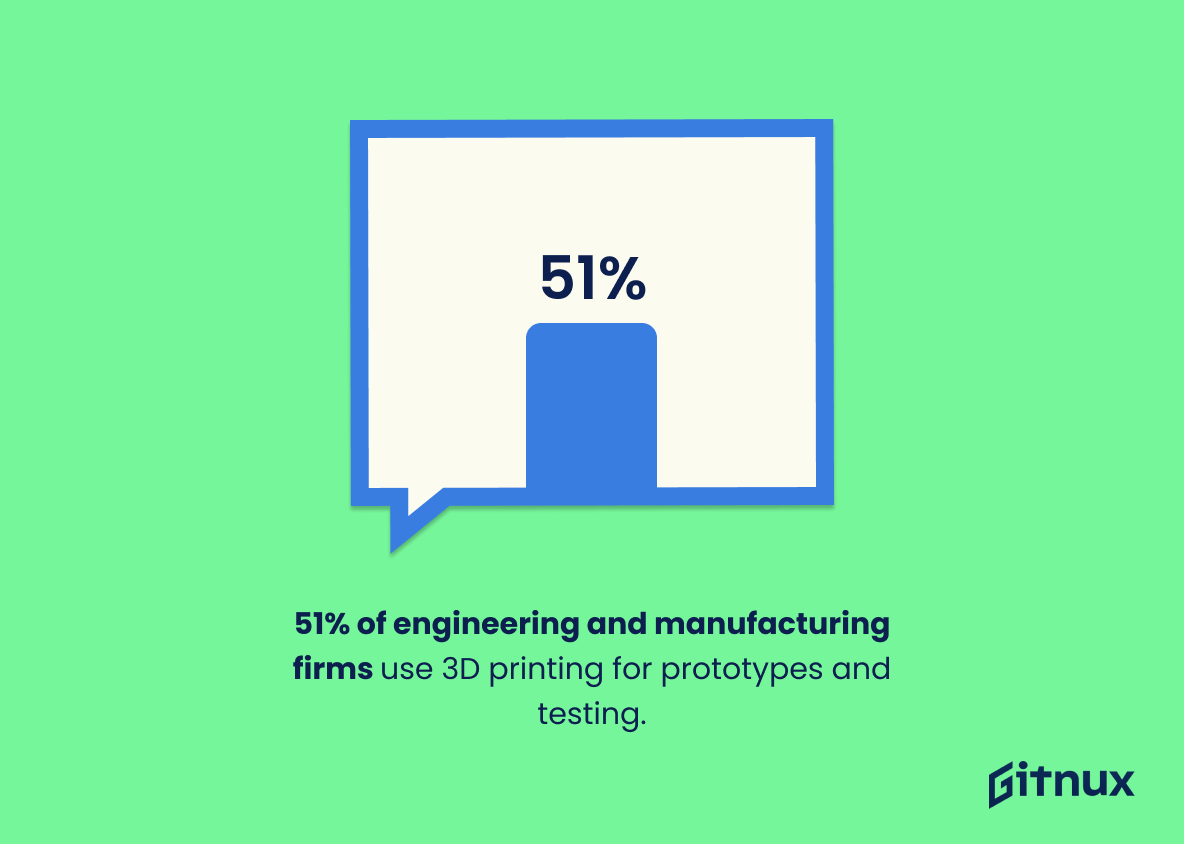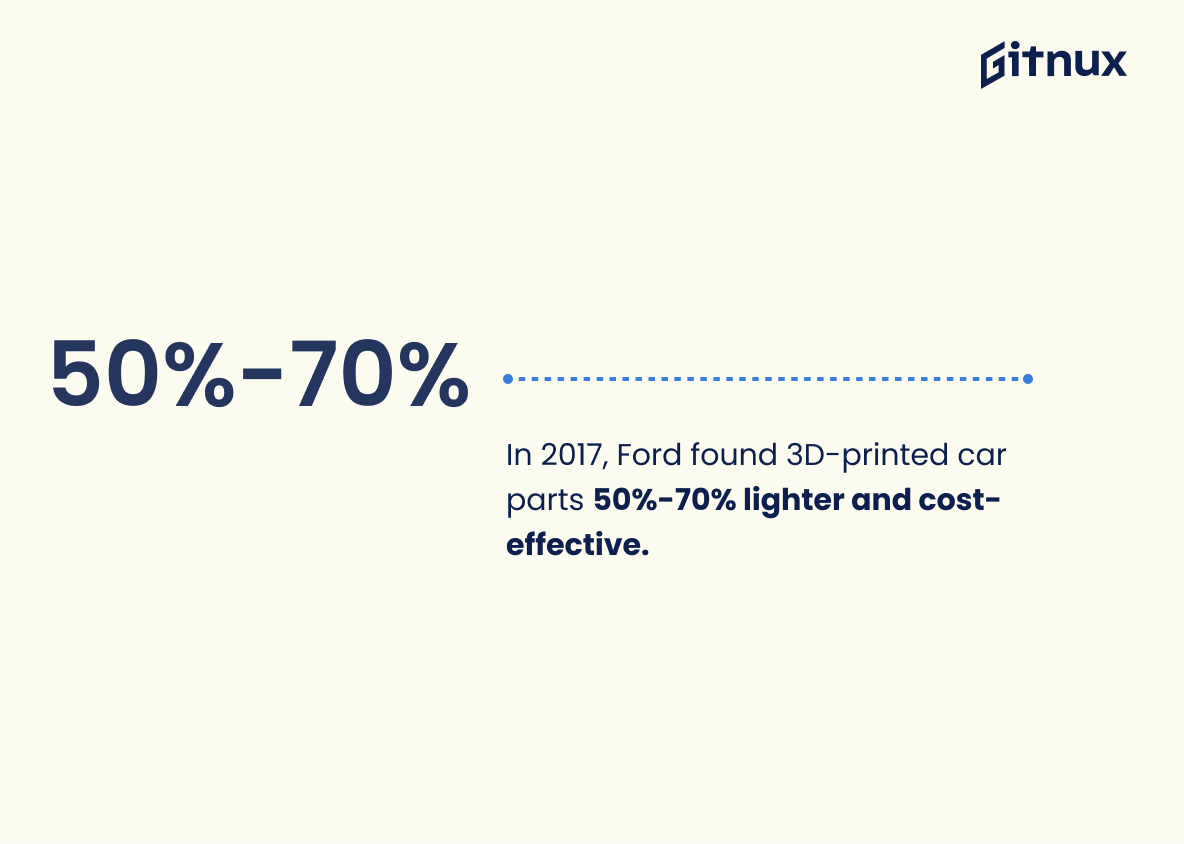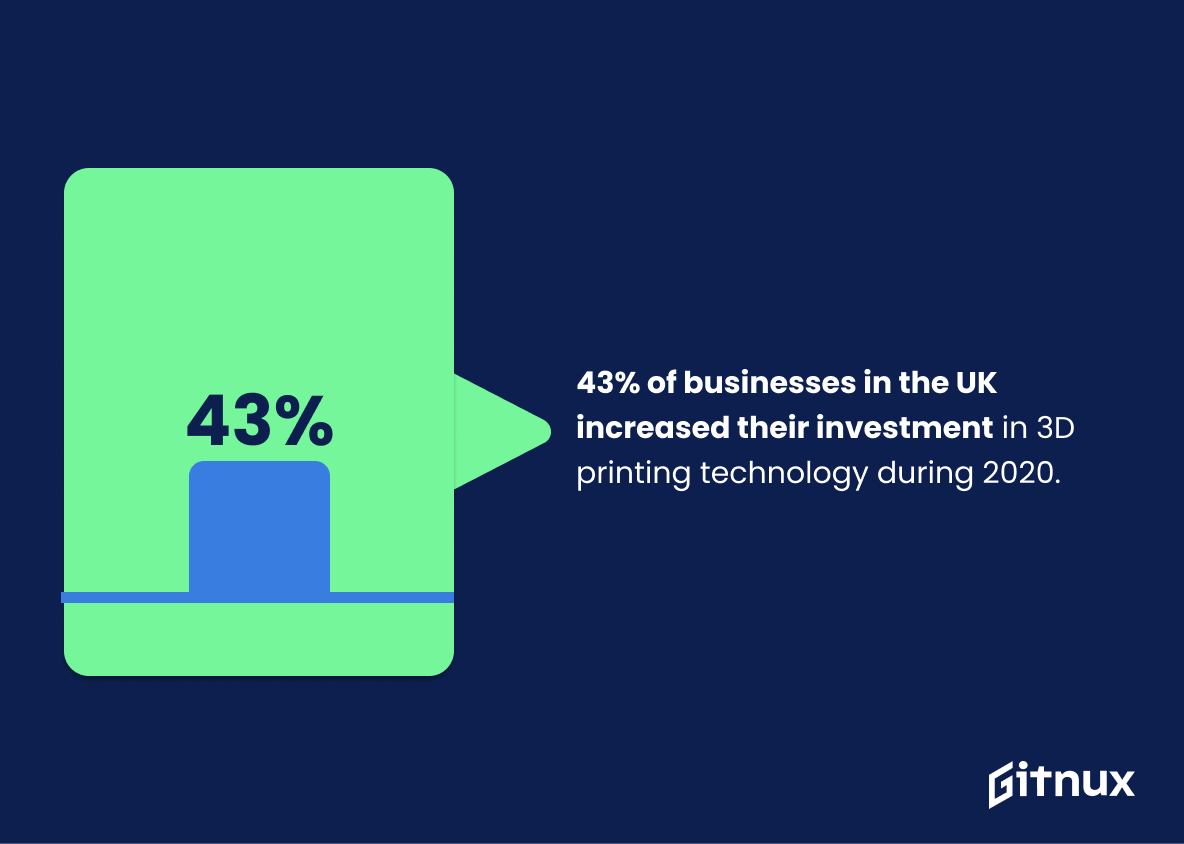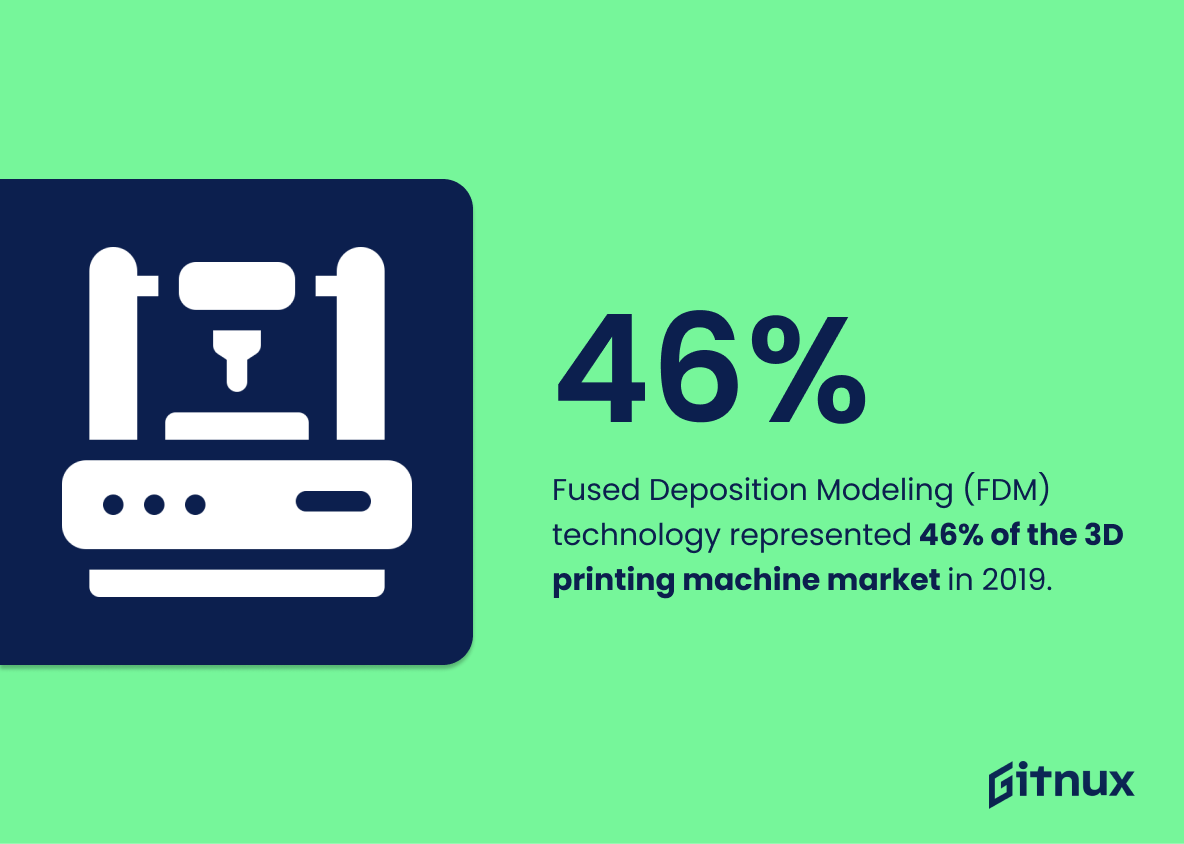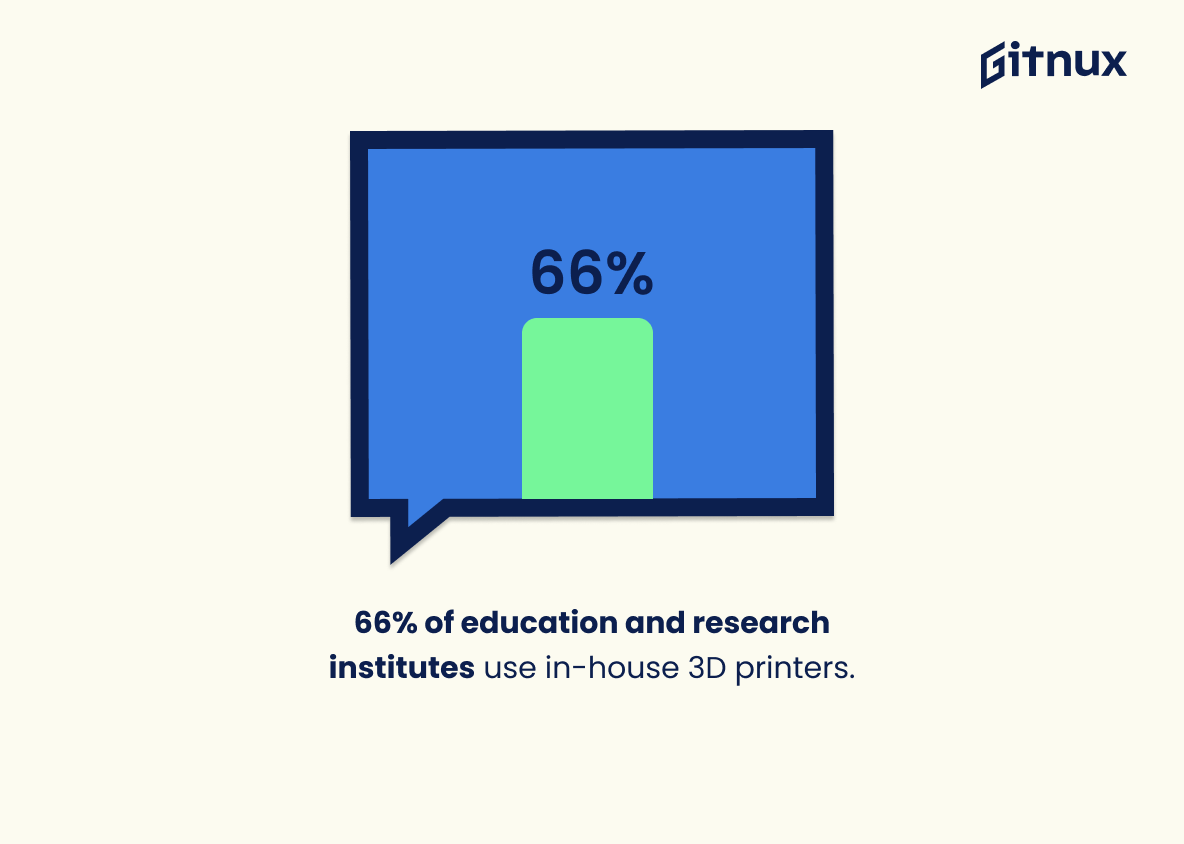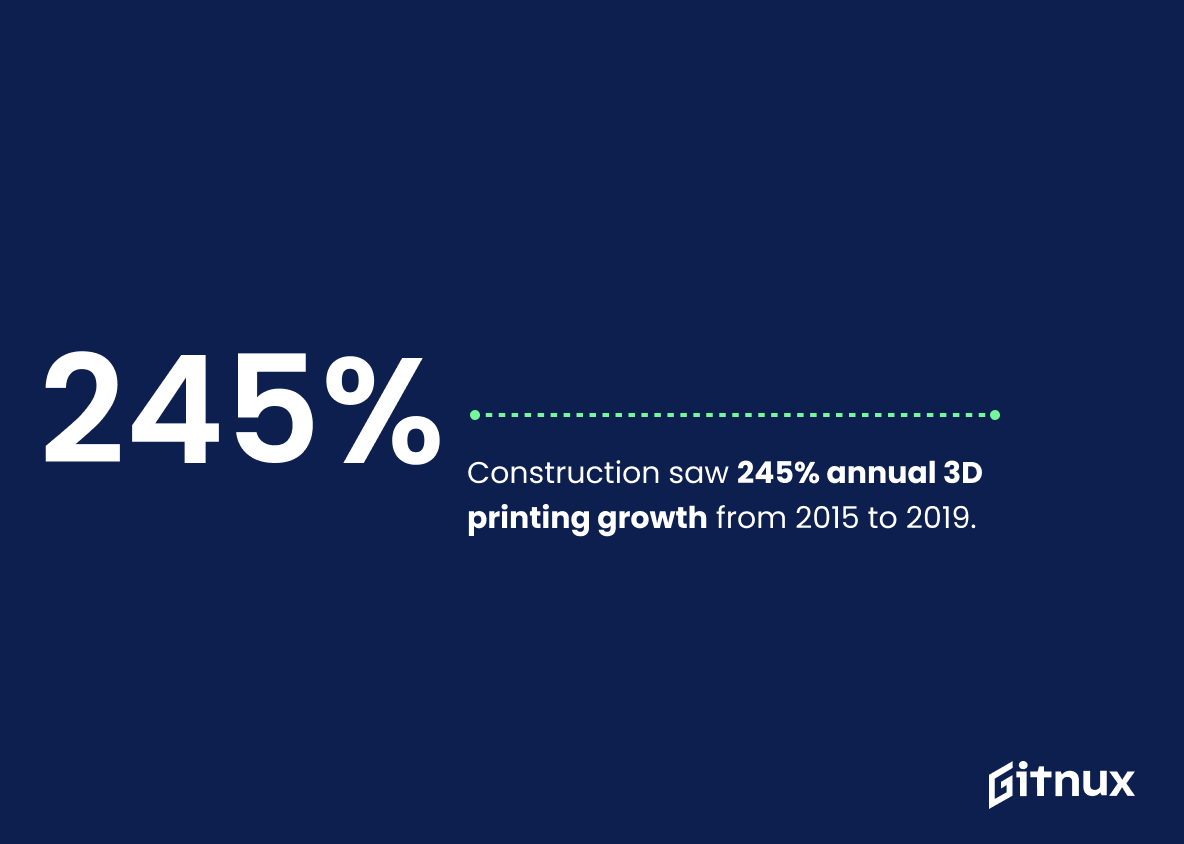The 3D printing industry has seen tremendous growth in recent years, with the global market predicted to account for over $63.46 billion in spending by 2025 and a CAGR of 21% between 2021 and 2026. Companies utilizing 3D printing have experienced an advantage over competitors who aren’t using this technology, as 93% saw benefits from its use in 2018. In 2020 alone, 496,475 units of 3D printers were sold worldwide while the total unit sales of materials reached $8.7 billion that same year. The services sector was valued at $5.97 billion last year and is expected to reach nearly double that amount by 2028; 22% of adopters reported 25%-50% improvement on lead time reduction due to their usage of these technologies too.
In terms of geographical distribution, Asia Pacific accounted for 45%, followed closely behind by North America (25%) when it comes to the global share held within the 3D printing market size during 2020 – 72% U.S manufacturers having adopted some form or another already. Aerospace & defense sectors made up 17%, 51 % engineering/manufacturing companies used them for prototypes/test components whilst 43 % businesses increased investment into such techs throughout UK during 2020 itself – 66 % education institutes also had access via internal sources then there’s FDM which represented 46%. Finally 27 percent increase was noted regarding publicly accessible US-based printers from 2018-2020 plus construction sector witnessed 245 percent annual growth rate adoption wise since 2015 till 2019 with dental segment expecting 9 point 1 Billion USD worth revenue come 2028 end..
This statistic is a testament to the immense potential of 3D printing technology. It shows that the 3D printing market is expected to experience tremendous growth in the coming years, indicating that 3D printing is becoming increasingly popular and widely adopted. This statistic is a clear indication that 3D printing is here to stay and is likely to become an integral part of many industries in the near future.
The 3D printing industry is expected to register a CAGR of 21% between 2021 and 2026.
This statistic is a testament to the potential of the 3D printing industry, indicating that it is expected to experience rapid growth over the next five years. It is a sign that 3D printing is becoming increasingly popular and is likely to become an even more integral part of the manufacturing process in the near future. This makes it an important statistic to consider when discussing the current and future state of 3D printing.
3D Printing Statistics Overview
93% of companies using 3D printing in 2018 saw an advantage over competitors who aren’t utilizing the technology.
This statistic is a powerful testament to the potential of 3D printing technology. It shows that companies who have adopted 3D printing have seen a clear advantage over those who have not, indicating that 3D printing can be a powerful tool for businesses looking to stay ahead of the competition.
In 2020, the total unit sales of 3D printers worldwide were 496,475.
This statistic is a testament to the growing popularity of 3D printing technology. It shows that more and more people are investing in 3D printers, which is a clear indication that the technology is becoming increasingly accessible and useful. This is an important milestone for the 3D printing industry and a sign that the technology is here to stay.
The global market for 3D printing materials is projected to reach $8.7 billion by 2026.
This statistic is a testament to the potential of 3D printing materials, indicating that the market is expected to grow significantly in the coming years. It is a clear indication that 3D printing is becoming increasingly popular and is likely to become an even more integral part of the manufacturing process in the future.
22% of 3D printer adopters have experienced a 25%-50% improvement in lead time reduction.
This statistic is a testament to the power of 3D printing technology, demonstrating that it can have a significant impact on lead time reduction. It highlights the potential of 3D printing to revolutionize the way businesses operate, allowing them to produce products faster and more efficiently. This statistic is an important reminder of the potential of 3D printing and should be included in any blog post about 3D printing statistics.
In 2020, Asia Pacific accounted for the largest share of the 3D printing market, with a 45% market share.
This statistic is a testament to the immense potential of 3D printing in the Asia Pacific region. It highlights the fact that the region is leading the way in the 3D printing market, and is likely to continue to do so in the future. This is an important point to consider when discussing the future of 3D printing, as it shows that the Asia Pacific region is a key player in the industry.
The aerospace and defense sector accounted for 17% of the total 3D printed parts produced in 2020.
This statistic is a testament to the growing importance of 3D printing in the aerospace and defense sector. It highlights the fact that 3D printing is becoming an increasingly viable option for producing parts in this industry, and that it is being embraced as a cost-effective and efficient way to produce components. This is a trend that is likely to continue in the future, as 3D printing technology continues to evolve and become more accessible.
51% of engineering and manufacturing companies utilize 3D printing for producing prototypes and test components.
This statistic is a testament to the power of 3D printing in the engineering and manufacturing industries. It shows that a majority of companies are taking advantage of the technology to produce prototypes and test components, demonstrating the effectiveness of 3D printing in these industries.
Ford conducted a study in 2017 and found that car parts produced through 3D printing were 50%-70% lighter and more cost-effective compared to traditional manufacturing methods.
This statistic is a powerful testament to the potential of 3D printing technology. It demonstrates that 3D printing can produce car parts that are lighter and more cost-effective than traditional manufacturing methods, making it an attractive option for car manufacturers. This statistic is an important reminder of the potential of 3D printing and its ability to revolutionize the automotive industry.
43% of businesses in the UK increased their investment in 3D printing technology during 2020.
This statistic is a testament to the growing popularity of 3D printing technology in the UK. It shows that businesses are recognizing the potential of 3D printing and are investing in it to stay ahead of the competition. This statistic is a clear indication that 3D printing is becoming an increasingly important part of the business landscape in the UK, and it is a trend that is likely to continue in the future.
The dental 3D printing market is expected to reach $9.1 billion by 2028.
This statistic is a testament to the potential of 3D printing technology, indicating that the market is expected to grow exponentially over the next decade. It is a clear indication that 3D printing is becoming increasingly popular and is being adopted by more and more industries. This statistic is a great example of the potential of 3D printing and its ability to revolutionize the way we create and manufacture products.
Fused Deposition Modeling (FDM) technology represented 46% of the 3D printing machine market in 2019.
This statistic is a testament to the popularity of FDM technology in the 3D printing machine market. It shows that FDM technology is the most widely used 3D printing technology, and is a major factor in the growth of the 3D printing industry. This statistic is important to consider when discussing the current state of 3D printing, as it provides insight into the technology that is driving the industry.
66% of education and research institutes use in-house 3D printers.
This statistic is a testament to the growing popularity of 3D printing technology in the education and research sector. It shows that more and more institutes are recognizing the potential of 3D printing and are investing in the technology to help them in their research and educational endeavors. This statistic is an important indicator of the increasing acceptance of 3D printing technology and its potential to revolutionize the way we learn and conduct research.
The construction sector experienced an annual growth rate of 245% in the adoption of 3D printing technologies from 2015 to 2019.
This statistic is a testament to the incredible potential of 3D printing technologies, demonstrating the remarkable growth of the construction sector in its adoption of these technologies over the past four years. It is a clear indication that 3D printing is becoming an increasingly important part of the construction industry, and is likely to continue to be so in the future. This statistic is an important reminder of the power of 3D printing and its potential to revolutionize the construction industry.
Conclusion
The statistics presented in this blog post demonstrate the rapid growth of 3D printing technology and its increasing adoption across a variety of industries. By 2025, the global 3D printing market is predicted to account for over $63.46 billion in spending, with an expected CAGR of 29%. 93% of companies using 3D printing saw advantages over competitors who weren’t utilizing it, while 72% U.S manufacturers have adopted it in some way. The total unit sales worldwide were 496,475 units and the global market for materials was projected to reach $8.7 billion by 2026; meanwhile services are estimated at around $13.78 billion by 2028 and bioprinting is anticipated to hit a size of 1$82 million by 2022 respectively . In 2020 Asia Pacific accounted for 45%, aerospace & defense 17%, engineering & manufacturing 51%, construction 245% annual growth rate from 2015-2019 ,and dental applications 9$.1billion forecasted till 2028 FDM technology represented 46 %of printer machine markets 2019 whereas 66 % education research institutes use house printers 2018 -2020 27 % publicly accessible US printers grew . These figures show that there has been significant investment into developing new technologies as well as increased demand from businesses looking to benefit from these advancements – making now an exciting time for those interested or involved with 3D Printing.
References
0. – https://www.grandviewresearch.com
1. – https://www.researchgate.net
2. – https://www.marketwatch.com
3. – https://www.sculpteo.com
4. – https://www.uk.rs-online.com
5. – https://www.globenewswire.com
6. – https://www.ultimaker.com
7. – https://www.mordorintelligence.com
8. – https://www.reuters.com
9. – https://www.statista.com
10. – ZipDo, cited June 2023: 3D Printing Statistics
11. – Zipflix – Statistieken over 3D Printen
12. – Srive – 3D Printing Statistics

